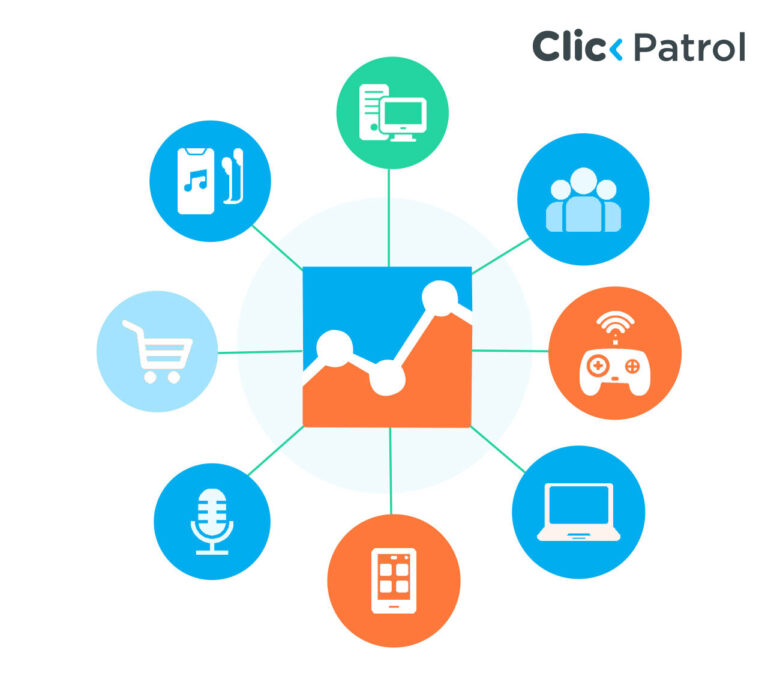
Understanding Fake Click Detection
Abisola Tanzako | Oct 11, 2024

Table of Contents
Online presence is an essential part of marketing strategies these days. However, fake clicks threaten the effectiveness and credibility of these strategies and marketing efforts. This menace involves people or automated bots clicking on ad campaigns without actual interest, which wastes the resources spent on the ads and their budget and distortion of data.
Fake click is a form of ad fraud that artificially inflates the number of clicks on an ad using various techniques, mainly to drain an advertiser’s budget or revenues. This article will explain fake click detection’s mechanisms, methods, and impacts and share some of its techniques and technologies.
Fake-click overview
Fake click detection entails understanding the different ways fake clicks are built on your ad campaigns, and these could result from competitors wanting to deplete your ad budget to automated bots designed to act like humans or click farms that keep vast numbers of employees clicking on advertisements. These invalid activities distort the performance metrics of ad campaigns such that an advertiser cannot evaluate the precision of the success of their marketing campaigns.
Fake click detection helps advertisers retain the integrity of their ad campaigns, utilize advertising budgets on genuine user engagement, and achieve proper performance analytics to ensure a higher return on investment (ROI). However, fake click detection requires advanced machine learning technologies and analysis in real-time monitoring of click patterns and user behavior to flag inconsistencies that may point to fraud.
Methods of Fake Click Detection
Detection of fake clicks involves multifaceted approaches that use technology, data analysis, and, most importantly, human oversight. Some of the most effective methods include:
- Behavioral analysis: This considers the user’s actions in view, time spent on a page, the number of pages visited, and engagement with an advertisement. An analysis like this can clearly explain genuine and fake clicks since bots contain unnatural behavioral patterns, easily captured via behavioral analysis.
- IP address analysis: Monitoring IP addresses helps detect patterns of invalid activities. A large number of clicks from one particular IP address or a range of suspicious IP addresses is a red flag for fake clicks.
- Device fingerprinting is a method of data collection regarding the device used to click an ad, including the type of browser, the operating system used, and the resolution of the screen. Creating fingerprints for devices helps advertisers detect and block fake clicks coming from known devices.
- Machine learning algorithms: Advanced machine learning algorithms can sift through massive volumes of data to identify patterns and anomalies characteristic of fake clicks. These algorithms can continuously learn and adapt to newer fraud techniques and are, hence, really effective in finding and preventing fake clicks.
- Third-party fake click detection services: Third-party detection services such as ClickPatrol, specialize in the prevention and detection of fake click by applying a mix of AI and machine learning algorithms to provide current detection and blocking of fraudulent clicks.
Technologies used in fake click detection
AI and machine learning are currently at the frontline in click fraud detection. AI and ML can process big datasets, identify patterns, and adapt to new fraud techniques, where continuous learning from new data and improved accuracy over time come in.
- Big data analytics: Analyzing high volumes of data in real-time is another factor in fake click detection. Data analytics platforms can consume, process, and analyze click data, user behavior, and other relevant metrics to identify invalid activity.
- Blockchain technology: Blockchain allows the decentralized and transparent tracing and confirmation of ad clicks. Every click is recorded on a blockchain, so the information will retain its integrity and become more fraud-resistant to fake clicks.
- Bot detection software: Specialized software solutions identify and block traffic generated by bots. They employ various techniques, including CAPTCHA tests, which tell them about the difference between human-made and automated clicks.
- IP geolocation: Analyzing IP addresses’ geographic locations can help advertisers spot suspicious patterns, such as clicks from regions where they do not serve their ads.
Impacts of fake click detection
Effective fake click detection has several positive impacts on digital advertising:
- Cost savings: Detecting and blocking fake clicks can prevent businesses from losing enormous amounts of money and wasting time on fake interactions. This ensures that the advertising budget is utilized further.
- Accurate analytics: Fake click detection protects the accuracy of analytics. Accurate data helps the advertiser adjust the modes according to real user engagements.
- Enhanced trust: Effective detection mechanisms in fighting click fraud help strengthen credibility among the advertiser and the publisher. Advertisers should have confidence that their resources will be safeguarded and encouraged to invest more in digital advertising.
- Better audience targeting: It minimizes fake clicks that do not help the advertiser connect with a user likely to convert into a buyer. This results in better audience segmenting and, overall, better conversion rates.
- Competitive advantage: Those employers capable of handling fake clicks can be at an advantage compared to their competitors. Thus, they can get more for their ad spend and gain better campaign results than competitors, who can still be plagued with fake click problems.
Limitations and challenges of fake click detection
The limitations and challenges of detecting fake clicks include:
- Attribution complexity: It can be hard to distinguish which of the clicks are genuine and which are faked due to activities such as IP spoofing and proxy servers, among others. This makes assigning the clicks correctly and isolating the fake sources difficult.
- Active detection: Identifying and preventing fake clicks in real time is essential since it might lead to a significant loss of money and potential misuse of a client’s ad budgets. Nevertheless, current analysis entails the use of complex algorithms and increased rates of data analysis, thus may pose technical challenges and high costs.
- Integration with existing systems: Fake click detection solutions must often be integrated with several advertising platforms and analytics tools. Ensuring seamless integration without disrupting ongoing campaigns can be a significant challenge for advertisers.
- Variability in user behavior: Real users behave very differently, which makes it rather difficult to establish any baseline for normal activities. This variability will add to the challenge of detecting anomalies as potential fraud.
- Global reach: Fake clicks are a problem facing the entire world, and scammers work from different countries and time zones. This dictates the need for detection systems that can perform well in different regions of the world and with different cultures, which adds another level of difficulty.
- Data sharing and collaboration: Fake click detection often requires collaboration and information sharing among various partners, such as advertisers, publishers, and the services that provide detection. Ensuring data privacy and security while facilitating this collaboration can be a challenge.
Staying ahead of fraudsters with fake click detection
Fake click detection is considered one of the most crucial tasks related to modern digital advertising. However, with advanced technologies and methodologies, it is now easier to protect ad spend, ensure campaign performance is at its best, and even fetch more realistic insights from marketing efforts. Fake click is a common problem that jeopardizes the digital advertising marketplace.
With the right detection tools, data analysis, and best practices in place, advertisers can effectively detect and prevent fake click. Additionally, by staying ahead of fraudsters with watchfulness and investing in advanced fake click detection tools, businesses can make sure their ad budgets are protected, and their trust in digital advertising efforts is retained, with increased ROI. The advertising industry can also decrease the impact of fake clicks by being proactive and introducing continuous technological advancements.
FAQs
Q.1 Who is responsible for fake clicks?
Unethical competitors who need or wish to increase your ad cost & waste your budget. They can use bots or click farms (humans) to achieve their aim. Publishers & affiliates, in the case of Google Adsense or display network ads, who earn per click and want to make more money.
Q. 2 How does Google detect fake clicks?
Google uses manual detection; some traffic is subjected to manual checks to approve or disapprove the traffic source. For example, a research team filters and analyzes the device data to help detect new fraud schemes in research and botnet hunting.
Q. 3 How serious of a problem is fake click?
Fake clicks are a serious threat to paid advertisers and publishers despite the many attempts to stop them. In fact, they are one of the biggest ongoing scams online, and almost all PPC campaigns experience this type of ad fraud.





